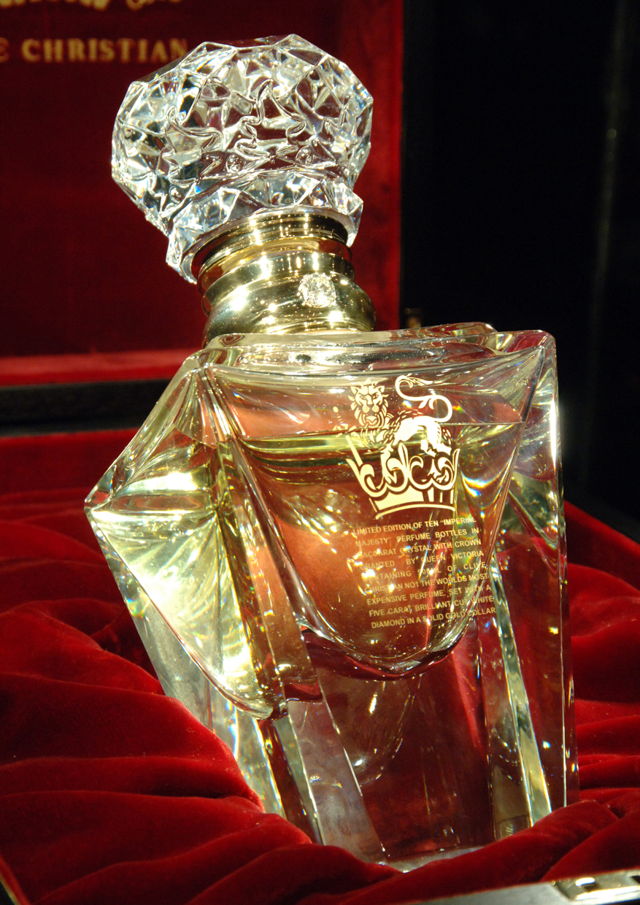Aristotle believed the hand was the tool of tools, offering strength and protection. The Hamsa hand is one of the most popular good luck symbols in the world. It is thought to protect the user from negative energy and jealousy. It is a palm-shaped amulet found in the Middle East and North Africa on jewelry and designs. It is the open right hand and is thought to defend against the evil eye. This amulet is a protective sign in all faiths and is thought to bring happiness, luck, health, and fortune.
A horseshoe is a common symbol of luck in the UK and many other cultures. It's thought that if you display it with the ends pointing up then it will gather up lots of wealth and prosperity for you. Also known as the Feng Shui coins, they are round coins with a square-cut center and Chinese characters engraved on them, usually tied with red rope or silk. The round shape represents heaven and the square center-cut symbolizes earth.
This combination attracts positive energy from the heavens and earth. It's common to receive one coin inside a sealed red Ang Pow envelope for businesses as a symbol of wishing luck and fortune to the owner. For the year of the Ox, the Chinese believe it will bring in extra luck and wealth when you hang three i-ching coins on the inside front of your doorknob.
For those in retail, it's best to always have these coins with you to bring your business luck and prosperity. Luck is symbolized by a wide spectrum of numbers, objects, plant and animal life and lucky charms from all around the world, all of which may vary depending on a culture's folklore. The significance of each symbol is rooted in either superstition, mythology, esotericism, or religion. The number 13 is also considered to be unlucky and many elevators simply skip the number 13 and go straight to 14 because of this superstition.
The hamsa is Israel's own version of warding off the evil eye from homes and public spaces. Both Muslims and Jewish people use the hand-shaped amulet with thumbs on both sides to protect themselves from misfortune. Hamsas are also adorned in the sacred color blue and symbols like the fish, eyes, or the Star of David. Prayers like the Birkat Habayit or the Tefilate HaDerech (Traveler's Prayer) are often inscribed on Jewish Hamsas. Boost your chances for good energy and prosperity with these good luck charms. And if you were wondering, find out why four-leaf clovers are considered lucky.
The lucky horseshoe tradition dates to the 10th century and continues to be a symbol of luck to this day where people hang this particular talisman over the door to keep bad luck away and bring good fortune. Though the horseshoe is common in the United States as a good luck symbol, it can also be found in Islamic Art and Egyptian iconography. While the superstitious believe that hanging a horseshoe over your door will bring your home protection and good luck, many disagree about the proper way to hang it. The lucky charm may be able to deflect negativity from your life and attract only positive energy. They could be stones, keychains, crystals, rings, necklaces, or anything that is meaningful to you.
Turtles are aquatic reptiles and are seen as lucky throughout many regions and cultures. In Hawaiian mythology, green turtles are considered "aumakua"—a personal family god or an ancestor that appears to protect the family. They are mystical creatures with long lifespans, representing wisdom, longevity, and harmony with the environment around them. Turtles are often used in art, as jewelry, in prints, and designs all across the world.
They represent strength, endurance, and bring blessings and good fortune. It's a well-known saying that 'money attracts money' and many cultures believe in carrying lucky coins to attract prosperity. A key that is given from one lover to another is considered to be a symbol of unlocking the door to the person's heart. The Ancient Greeks believed the key held the power to send prayers to reach the gods, called the "Key of Life".
Keys have been considered good luck charms for centuries and are symbolic of unlocking the heart. Dreams of keys might indicate being open to new opportunities and ideas. A superstition for Jewish midwives is to place a key in the hand of a woman who is actively giving birth to ensure a safe delivery. In Eastern European culture, keys were also thought to prevent bad dreams and bring only good dreams. In Japan, three keys tied together offer health, wealth, and love to the wearer.
In Italian culture, horns make a lucky charm called a cornicello. The cornicello is symbolic of the creatures that were considered sacred in ancient Europe (faunus, from Ancient Rome; cernunnos, from the Celts; selene, from Greece). It protects against the evil eye, encourages fertility, and prosperity, and is said to aid in connection to one's heritage. When received as a gift, lucky bamboo plants are thought to deliver luck and prosperity. These common houseplants are not only auspicious, they're also easy to care for. Along with lucky bamboo, there are a host of other plants that are believed to bring good fortune to a home, including money tree plants, snake plants, orchids, jade, and peace lillies.
With that in mind, we have created the ultimate collection of powerful good luck charms from a variety of cultures. Read on to discover some of the most powerful lucky charms that you can buy to bring money, success and wealth. Many hang the bagua above a door as it analyzes energy in a space.
This feng shui item involves the 8 areas that are essential in one's life, like health and family, wealth and abundance, and love and marriage, to name a few. It also acts somewhat like a dream catcher wherein the center mirror absorbs and traps any unlucky and negative energy, and the outer octagon spreads positive energy. When you think of bats, Halloween, horror movies, and spooky caves may be the first things that pop into your head—not necessarily good luck charms. But in Chinese culture, these nocturnal winged creatures are far from scary; they're actually a symbol of happiness and good fortune.
In fact, the Chinese characters for "bat" are homonyms for "fortune" or "blessings." A painting or tapestry with five red bats will give you an extra dose of good luck. Red signifies joy and the five bats represent the "Five Blessings"—health, longevity, love of virtue, prosperity, and a peaceful death—which are paramount in Chinese culture. In face, Chinese mothers used to often sew small bat-shaped buttons made out of jade on their newborn's caps to bestow a long, healthy life on them. If you can't find some bat artwork, try stealing these secrets from people who seem naturally prone to good luck. Some cultures use a hand with an eye in its center for protection. But some of the most popular and beautiful evil eye talismans come from Turkey.
They use glass beads with alternating blue and white circles to bring themselves more luck. In some cultures of the ancient Middle East, sapphire was thought to possess supernatural powers. Sapphires are the birthstone of the month of September—bringing extra luck to the people of that birth month. It is also known to protect people's wealth and to ward off envy. Frogs are symbolic of abundance, wealth, friendship, and fertility. The Romans used frogs as a mascot for bringing luck into the home.
Symbolically, frogs are tied to rebirth, resurrection, and fertility. In feng shui, money frogs are placed in the home to attract wealth (placed in the "wealth position"). In some cultures, frogs are water spirits and represents emotional transformation.
The original people of Australia believe that frogs brought the thunder and rain. In Ancient Egypt, Hekt was the frog goddess and protected newborn babies. Lucky bamboo is a member of the dracaena family and is not actually bamboo. It is a common gift that is representative of good fortune and is fairly easy to grow. The stalks are said to bring luck in the form of happiness, long life, and wealth.
There are several lucky charms that will keep you on the right side of Lady Luck in Japanese culture. A stylized rotund red hollow paper-mâché doll that represents the founder of Zen Buddhism, the Daruma Doll is a good luck talisman that helps people achieve their goals. Purchased from a temple at the beginning of the new year, the spaces where the doll's eyes should be are left blank. Full of symbolic meaning and aesthetic appeal, the tree of life is one of the most popular good luck symbols. It's often considered a symbol of good health, wealth, positive energy and a bright future.
It adds a ton of significance and visual interest to this rustic necklace. Each Christmas, the fish is killed, gutted, then soaked in milk and salt to dull the fishy smell and taste and sweeten the meat. It's then usually sliced from top to bottom to form horseshoe-shaped portions to bring good luck.
For an extra dose of fortune, they keep the carp scales in their wallets until the following Christmas Eve. Grapes, cakes, and noodles are considered as traditional foods that bring in good fortune around the world as well. The origin of the rabbit's foot as a good luck charm comes from the Celtics.
They believed that rabbits lived so deeply underground that they had an ability to speak with the spirits from the underworld. In modern times, it is still considered lucky to carry a rabbit's foot. In North America, a rabbit's foot can only be lucky if certain rules are adhered to. In order for the charm to be effective, it must be the back foot on the left-hand side, and the rabbit must be killed under a new moon in a cemetery. Behind every good luck charm is not only a superstition or fear, but a deep-rooted history connected to the charm's origin and the culture from which it came.
Good luck charms can evolve from folklore, legend, and even religion. Historically, many were used to protect people from the evil eye, a malicious glare that was believed to cause harm. Others were used to increase the likelihood of fertility or to bring good fortune. Elephants are the largest land animal and carry with them deep knowledge, sensitivity, and majesty.
In feng shui, elephants are representative of good luck, wisdom, protection, and fertility . In Southeast Asia, white elephants represent good fortunate and change. In Hinduism, the god Ganesh has the head of an elephant, and is seen as powerful and authoritative.
Elephants are commonly used and depicted in art and are tokens of good luck across many cultures. Alligators represent conservation of life and wellness of the body. Alligators are thought to bring good luck to gamblers, which is why in some cultures the teeth and feet are considered especially lucky. Alligators are a strong species and a top predator; they are patient and strike when the time is right. They are also likened to dragons, which are known for the armor and prowess, making them a symbol of luck and protection.
And a colourful Thai superstition for the fashion conscious where you can let the attraction of luck guide your wardrobe choices. Do you ever stand in front of your wardrobe in the morning wondering what to wear for the day? This question is answered more easily in Thailand than in other countries. In Thai tradition, each day of the week is assigned a specific colour, with these colours considered lucky on specific days of the week. Dressing in the colours of the day will ensure you a lucky day. Although this practice has lost its importance in modern Thailand, people still know all these colours by heart and consider the colour of the day they were born on to be their lucky colour.
Most Luckiest Thing In The World The lucky colours of each day are yellow for Monday, pink for Tuesday, green for Wednesday, orange for Thursday, light blue for Friday, purple for Saturday and red for Sunday. One of the most common symbols of luck, horseshoes were first considered lucky by blacksmiths. People believed that fire and iron had magical powers and would ward off spirits of the past. But be careful with how you hold or display your horseshoe — it's only good luck if the ends point upward. In Russia, Turkey and Japan it's considered bad luck to whistle indoors, as you may be whistling your money away. And in Korea people believe that by shaking your legs you will shake all your luck and wealth away.
If you're prone to fidgety legs, then this might be another reason to sit still. Celebrate Hogmanay, or the Scottish equivalent of New Year's Eve, with a tradition known as the 'first footing'. In Scotland, the first visitor to cross the threshold in the new year is said to bring good luck, especially if they're tall and dark of hair – and the handsomer the better. The so-called 'first footer' typically arrives bearing gifts, including silver coins, shortbread, and whisky. Fair-colored visitors, however, are believed to be an unlucky omen as they call back to the Viking invasions of the 8th and 9th centuries. With one of these Chinese lucky charms for money, you get a combination of benefits from two distinct types of charms.
Jade comes with protective properties and has the capacity to attract wealth. In fact, according to Chinese legend, in increases the flow of prosperity. Similar to the charms listed here, the Money Frog can also attract wealth and good business. Available in gold or porcelain, many feng shui experts claim that the Money Frog is the most significant symbol of prosperity. The figurine depicts either a frog sitting on coins or one with a coin in his mouth. This is often displayed on the northern side of the space or near the entrance and should be facing inward, never outward.
You've probably had someone give you the evil eye at some point in your life—that powerful glare of envy that some cultures believe may inflict harm or misfortune on your life. In the Turkish culture, "nazar" is another word for "evil eye" and the only way to ward it off is by using "Nazar Boncuğu," an eye-shaped glass bead amulet. The most powerful nazars were often blue because it emulated the sky where the Gods lived and protected them. Nazars distract the evil eye from the receiver's eye because of its uncanny resemblance to a real-life human eye. Many Turkish people hang their nazars in their homes or in their cars to protect them from evil and misfortune. Other countries such as Armenia, Iran, Albania, and Afghanistan also have evil eye amulets to keep the bad spirits at bay.
The evil eye is famous in many cultures—it wards off evil and is popularly worn as an amulet, in jewelry, and place as tokens around the house. Carrying the evil eye or wearing it actually protects from the Evil Eye itself—as if a mirror reflecting/repelling the negative energy away from the user. This is a powerful protective amulet and is commonly found in Mediterranean countries. The raven, for instance, was respected by sailors, especially the Vikings as these birds indicated that land was near.
In the folklore of the indigenous peoples of North American, hummingbirds are considered healers. Storks are also lucky, and in German folklore, storks are thought to bring babies to homes in baskets with their beaks. Although a penny is a relatively small sum, to many it represents wealth and the importance of saving.



























No comments:
Post a Comment
Note: Only a member of this blog may post a comment.